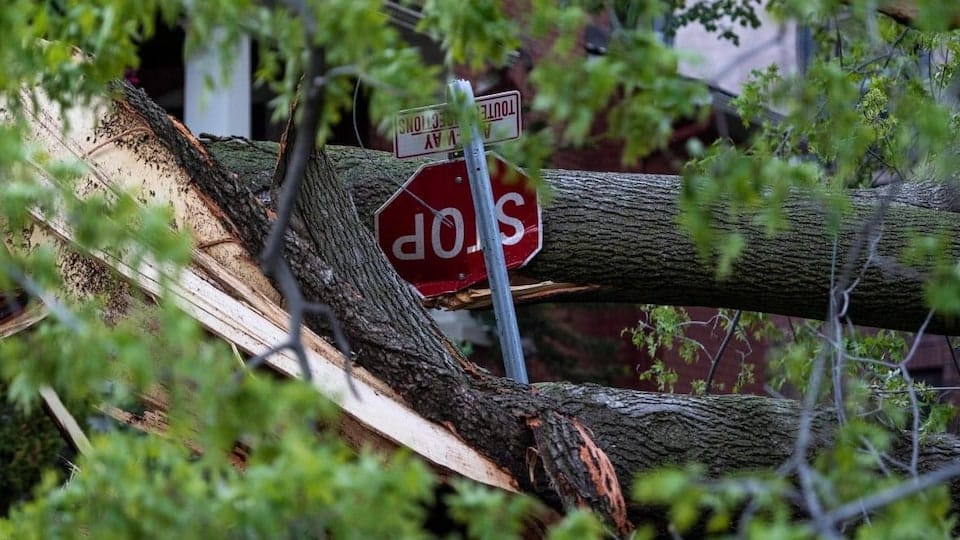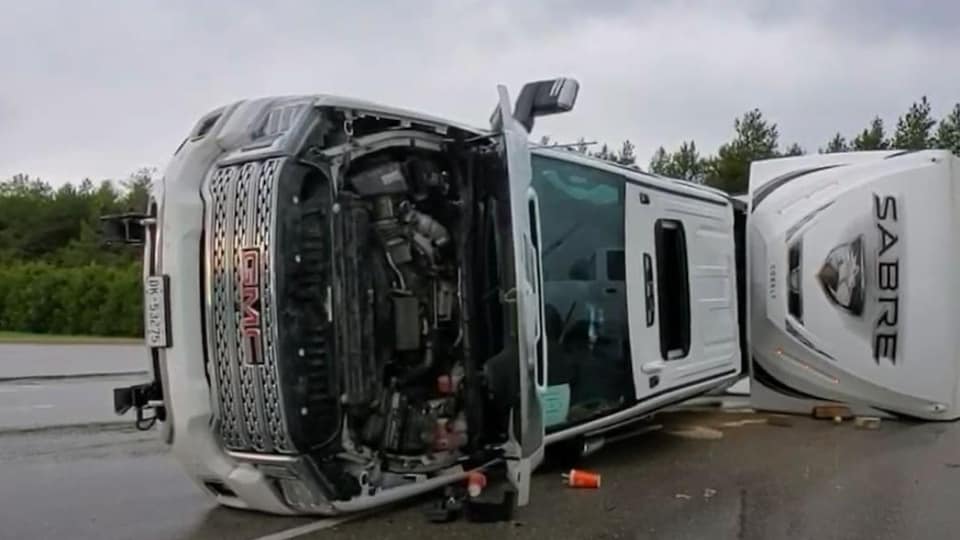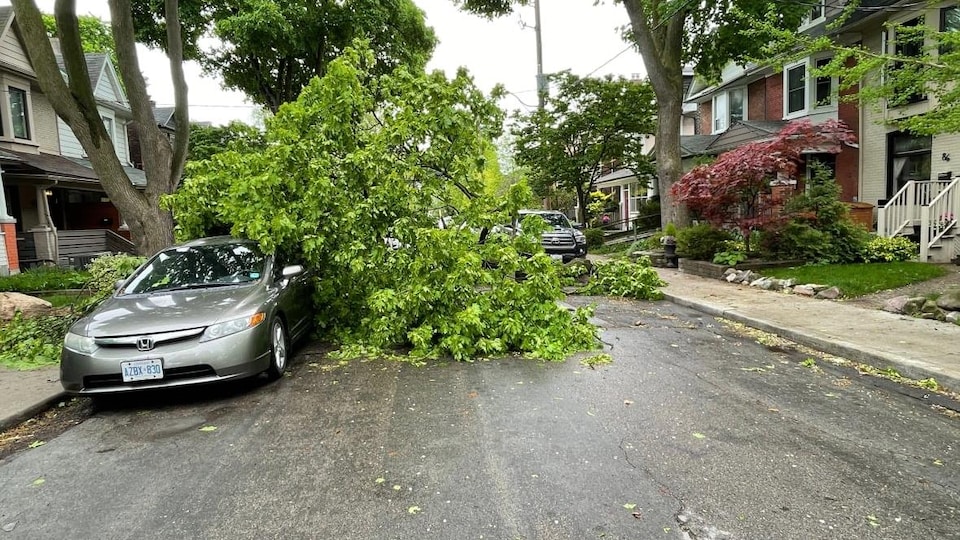All six people died when a tree branch broken by the winds fell on them.
The first victim was in a trailer near Pinehurst Lake, west of Hamilton, when a tree collapsed on his trailer shortly after noon on Saturday. Two other people were injured in the incident.
In Brampton, a 70-year-old woman was struck by a tree branch while walking outside. Taken to hospital, she did not survive her injuries, reports Peel Regional Police.
On the Township of North Kawartha side, near the city of Peterborough, a 64-year-old woman was also struck by a falling tree. She died at the scene of the incident.
In Ottawa, police say a tree fell on a 59-year-old man at a golf course west of the city. Finally, a man was also killed in Greater Madawaska, west of Ottawa.
Then, in Port Hope, a 74-year-old woman died, struck by a broken tree.
As of Sunday morning, 267,407 Hydro One customers in Ontario were without power in rural parts of the province, while a spokesperson for Hydro Toronto said about 15,000 homes in the Queen City were still without power. electricity.
According to spokesman Russell Baker, 110,000 homes lost power in Toronto on Saturday during the storm.
There is damage to our equipment, due to trees that have fallen on our power lines, prolonging our efforts to rectify the situation
he explains.
He adds that Hydro Toronto crews have been working through the night to restore power to affected residents, but he can’t predict when power will be back to everyone.
A typical type of thunderstorm in the United States
Francis Lavigne-Thériault is a research assistant for the Northern Tornado Project at Western University, London. According to him, this type of storm is called Derecho, which means straight ahead
in Spanish, and is relatively rare in Canada.
Phenomena like that happen more often towards the end of the summer and it’s relatively rare in southern Ontario in May, he says. It’s more of a system you would see in late summer in the Midwestern United States.
He adds that the last time Ontario saw such a storm in densely populated areas was in the 1990s.
” It can always be worse, but 5 deaths [au moment de l’entrevue, NDLR] that’s a lot for a storm in Ontario. »
Meanwhile, two Northern Tornado Project crews are on the ground Sunday reporting damage in southwestern Ontario and the Ottawa area.
We’re doing a full deployment for if there were any tornadoes in the storm line we saw yesterday.
he explains.
The Northern Tornado Project is collaborating with Environment Canada and plans to conduct analyzes using drones and satellites to complete its investigation.
Environment Canada says the storm line formed near Sarnia late Saturday morning and destructive gusts were reported across a wide swath of southern Ontario as thunderstorms moved through the area.
The weather agency also says that gusts reached 132 km / h in the Kitchener-Waterloo region, a peak in Ontario during the storm. Gusts reached 120 km/h at Pearson International Airport in Toronto and at Ottawa International Airport.
Political leaders offer their condolences
On Saturday evening, several politicians reacted to the storm on their Twitter account.
Progressive Conservative Party Leader Doug Ford offered his condolences to the families of those killed in the storm.
Same story with Steven Del Duca, the leader of the Ontario Liberal Party, and the leader of the NDP Andrea Horwath, who also thanked the first responders who responded quickly to emergencies.
With information from Camille Feireisen
Reference-ici.radio-canada.ca


